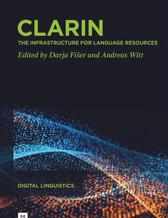New book maps research infrastructure for the humanities
A newly released anthology provides a first comprehensive overview of the European research infrastructure CLARIN, covering everything from the technology behind the infrastructure and the use of its language technology resources in various research projects, to the challenges the organization has faced and will face in the future. Mats Fridlund and Daniel Brodén at the Centre for Digital Humanities have contributed
CLARIN
CLARIN (Common Language Resources and Technology Infrastructure) is an actor in the field of research infrastructures for the humanities.
